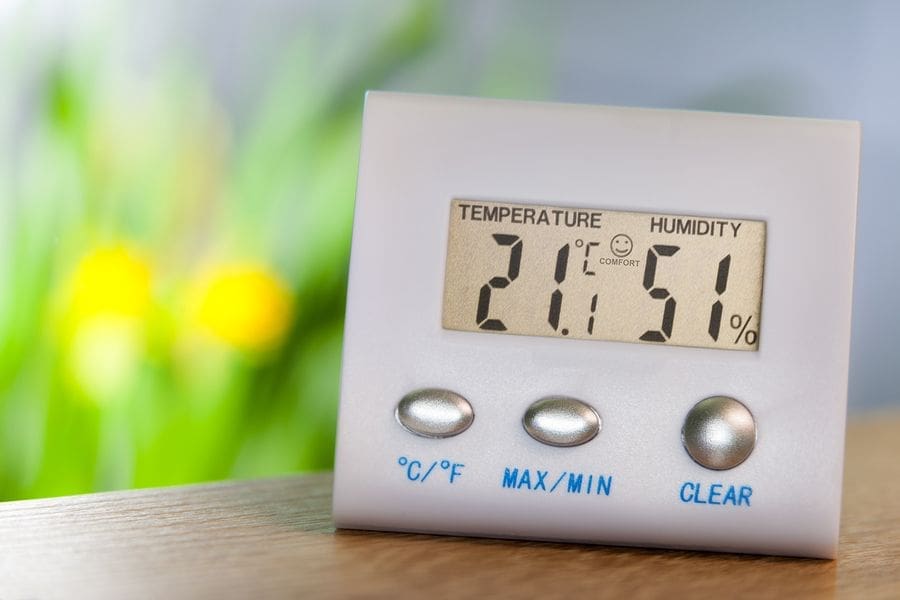

The air we breathe looks empty, but it’s not. It’s full of very small molecules –including molecules of water. When temperatures are warmer, those water molecules move around and are more likely to vaporize, making water vapor in the air. In colder temperatures, molecules are more sluggish, so the water molecules stay whole (or freeze if it’s cold enough).
With the same amount of water in the air, it can feel more humid in warmer temperatures and much drier in colder temperatures. That’s because when we talk about air humidity, we’re really talking about the amount of vaporized water in the air.
The need to manage humidity
We need a certain amount of moisture in the air around us. People are most comfortable when there’s a relative humidity level of 45 percent. When the air has too little moisture, it dries things out – like skin, mucous membranes, and the wood in your house. This causes your skin to feel itchy and uncomfortable, makes your nasal membranes more susceptible to bacterial microbes and causes your home’s wood to shrink and eventually crack.
Humidity and home heating
When it’s colder, the air has less humidity (vaporization) and it feels colder. In turn, your heating equipment has to run longer and work harder to heat your indoor air.
What to do:
Installing humidifiers to your HVAC system raises humidity levels throughout your home, making it easier for your equipment to heat the air. Not only does this significantly reduce the amount of energy needed to heat the air, it makes you (and the wood in your home) much more comfortable.
To increase moisture in the air you can also use portable room humidifiers, increase the number of live plants inside and place water basins near your heating system.
Humidity and home cooling
When it’s hot and air humidity is more apparent, the temperature feels even warmer than it is. Likewise, your air conditioning equipment has to work harder and run longer to cool the air. And even then, the air can feel clammy and heavy.
What to do:
Using dehumidifiers (ideally, installing them in your HVAC system) can lower the moisture level in the air, making it easier to cool and save energy. This will also reduce the clammy feel of moist air to make it more comfortable.
Utilizing room fans and exhaust fans is another way you can help reduce the amount of humidity in the air.
Your indoor air does need a certain amount of humidity for adequate heating and cooling – but it needs to be managed differently in different seasons. It’s beneficial for your comfort – and your health – to try and control humidity levels alongside your heating and cooling efforts. Energy-wise, it costs a lot less to humidify (or dehumidify) air than it does to heat (or cool) it.
Post Categories
Why Choose Us?
- We're strategically located in Pearland, TX
- Expertise to service all of your HVAC equipment
- Our technicians are NATE-certified
- We are an ACCA member company
- BBB accredited south Texas HVAC business
- We stand behind all of our HVAC work
